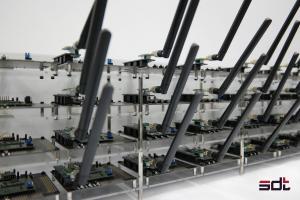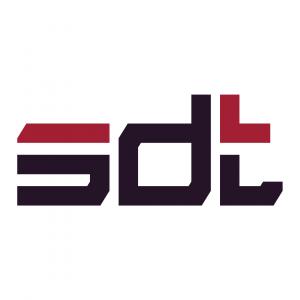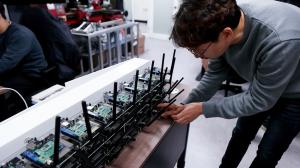SDT Inc. Develops Resilient Smart Cities Infrastructure on a 32-node Wi-SUN Mesh Network
SDT Inc. has developed a 32-node Wi-SUN FAN mesh network that supports a more resilient and scalable smart city infrastructure for connected devices.
SEOUL, SOUTH KOREA, April 12, 2022 /EINPresswire.com/ -- SDT Inc., a hardware-as-a-service (HaaS) platform company, has increased the technology supporting smart city infrastructure by developing a 32 Wi-SUN FAN node network.
According to Jiwon Yune, Founder and CEO of SDT, SDT succeeded in constructing a single mesh network by simultaneously connecting one Border Router Node and 32 Forward Router Nodes, implementing a technology based on an SDT-developed SoM (system-on-module) ‘SDT32F4M’. The system test report was obtained through KOLAS, an internationally accredited testing institute. This has also been one of the South Korean government funded R&D goals of the TIPS program (Private Investment-led Technology Startup Support program) carried out by SDT since 2019.
For comparison, a standard small mesh network consists of about 10 nodes. By increasing the size of the mesh network to 32 nodes, the network can handle a substantially greater complexity and scalability of connected devices.
Wi-SUN, or Wireless Smart Ubiquitous Network, is a low-power wireless communication technology in the 920MHz band created to improve the energy efficiency of smart grid services. Wi-SUN has a long communication distance and strong strength against obstacles and radio wave interference, so it is especially suitable for outdoor environments.
Low-power communication protocols such as LoRa and LTE Cat. M1 are built with a star topology in which each node is connected to a central base station. However, if the central base station that controls the whole is destroyed, communication between nodes is interrupted. On the other hand, Wi-SUN consists of a more resilient mesh network in which bi-directional communication nodes are connected based on MHDS (Multi-Hop Delivery Specification of a Data Link SubLayer). In a mesh network, even if one node fails, the data loss rate is low because it can pass through another router. In addition, since all endpoints do not have to connect to a telecommunication service provider network, data transmission costs are decreased compared to other types of communication.
SDT has made continuous efforts to promote Wi-SUN as a smart city standard in South Korea, including hosting a ‘Wi-SUN Open House’ by inviting the Wi-SUN Alliance and major member companies in 2019. Based on their current product development, SDT plans to acquire Amazon AWS and Microsoft Azure certifications for Wi-SUN networked devices, making it a first for the industry.
“Wi-SUN is one of the communication methods suitable for smart city services such as smart street lamps, intelligent AMI [Advanced Metering Infrastructure], and real-time forest fire or earthquake detection systems,” said Dongkeun Kang, director of SDT Research Center. "We will continue to research and develop new services to bring convenience to the lives of citizens.”
Natasha Kovacs
SDT Inc.
+82 2-3453-7494
email us here
Legal Disclaimer:
EIN Presswire provides this news content "as is" without warranty of any kind. We do not accept any responsibility or liability for the accuracy, content, images, videos, licenses, completeness, legality, or reliability of the information contained in this article. If you have any complaints or copyright issues related to this article, kindly contact the author above.



